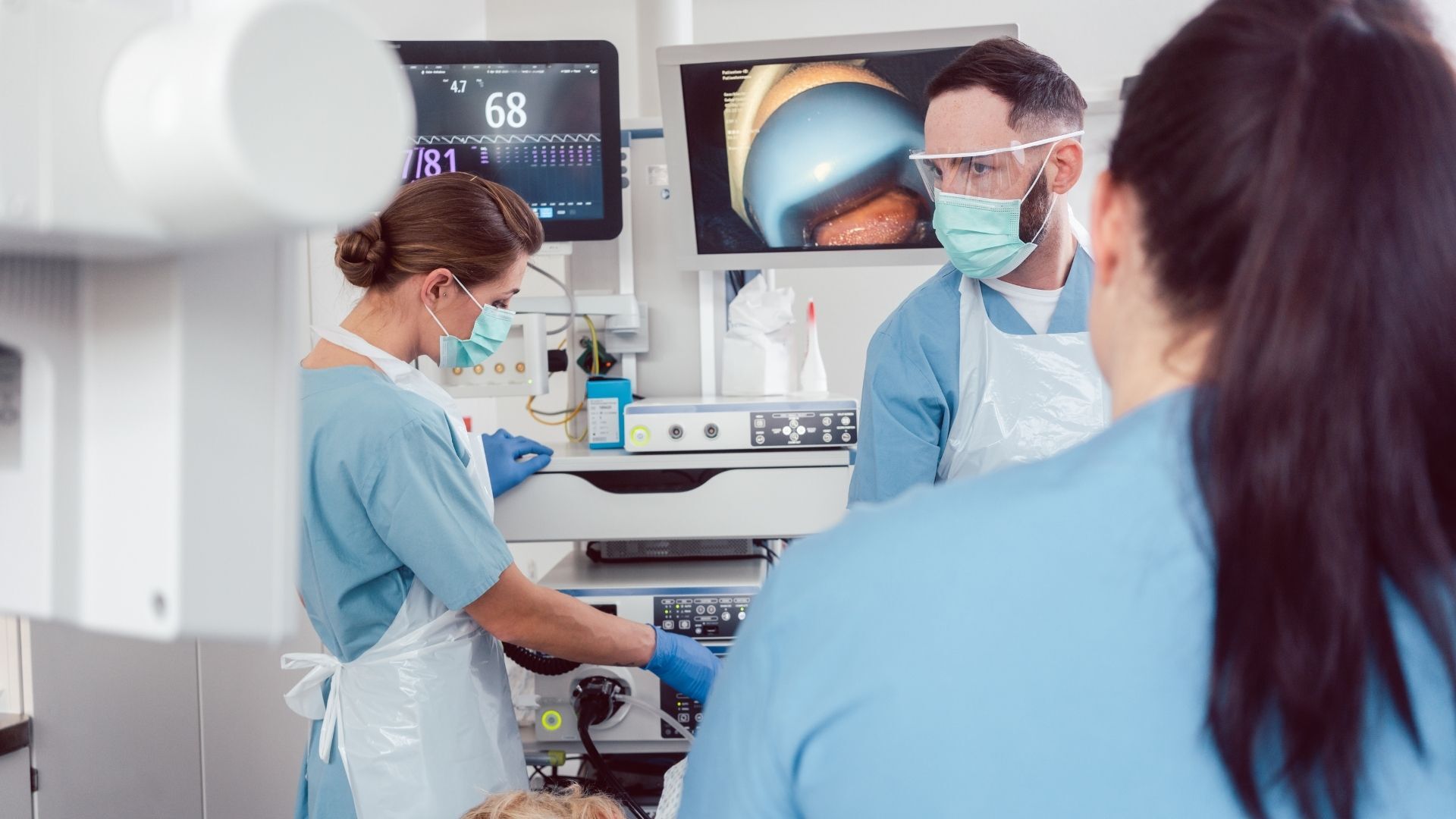
Endoscopies have revolutionized modern healthcare by offering a window into the digestive system’s internal landscape. Through a slender, flexible tube equipped with a camera, doctors can explore various organs, diagnose many conditions, and craft well-informed treatment plans. This is all accomplished in a simple outpatient procedure, helping any patient get back to what matters. Let's take a comprehensive look at what diseases can be detected by an endoscopy procedure and how one can get many people on track to recovery.
1. GERD (Gastroesophageal Reflux Disease)
Gastroesophageal reflux disease (GERD) is a chronic digestive disorder that allows the lower esophageal sphincter to abnormally relax and weaken. This allows stomach acids to splash into the esophagus, leading to heartburn, regurgitation, and chest pain. These symptoms impact many peoples’ livelihoods and can damage the esophageal lining over time.
Endoscopies help doctors judge the severity of esophageal damage caused by this reflux. They can also identify complications that are common symptoms of esophageal cancers, like inflammation or Barrett's esophagus.
2. Ulcers
Peptic ulcers are open sores that develop on the stomach’s lining or upper portion of the small intestine (duodenum). These sores are caused by excessive stomach acid or infections that gradually erode the protective linings.
These ulcers can cause symptoms such as abdominal pain, bloating, nausea, and (in severe cases) bleeding or perforation of the digestive tract. By directly visualizing these ulcers, doctors can determine their size, location, and severity. This informs well-crafted treatment strategies that help healthcare providers monitor their patients’ progress.
3. Esophageal Stricture
Esophageal stricture leads to a narrowed esophagus, often resulting in uncomfortable and difficult swallowing. It’s often caused by prolonged acid reflux or chronic inflammation, constricting a patient’s esophageal passageway. Endoscopies help doctors diagnose strictures and perform an esophageal dilation to widen any narrowed areas.
4. Celiac Disease
Celiac disease is an autoimmune disorder that allows gluten to damage the small intestine's lining, causing nutritional malabsorption. This condition can cause abdominal pain, diarrhea, and fatigue, potentially causing long-term complications if it goes untreated. An endoscopy helps doctors locate recurring damage to the small intestine's lining. Additionally, samples taken during the procedure can confirm the diagnosis and showcase the degree of intestinal damage.
5. Gastric Cancer
A formidable foe, gastric cancer develops on the stomach’s lining and only shows symptoms later. With alarming cancers like adenocarcinoma or lymphoma common, early detection is a necessity. By examining the stomach lining through an endoscopy, doctors can identify suspicious tumors and take biopsies that determine the cancer’s extent and nature.
6. Hiatal Hernia
If a patient’s stomach protrudes into the chest through the diaphragm, they may have a hiatal hernia. This starts when muscles supporting the diaphragm start to weaken, leading to GERD, heartburn, chest pain, and difficulty swallowing. Endoscopies help visualize the hernia’s extent and nature, guiding treatment decisions.
7. Inflammatory Bowel Disease (IBD)
Inflammatory Bowel Disease (IBD) is characterized by a chronically inflamed gastrointestinal tract. Some common IBDs include conditions like Crohn's disease and ulcerative colitis, resulting in abdominal pain, diarrhea, rectal bleeding, and weight loss. Unlike some of the previous conditions, this one often requires comprehensive, long-term management. An endoscopy can showcase intestinal changes, informing tailored treatment plans that help patients get back to normal lifestyles.
8. Submucosal Tumors
Finally, submucosal tumors are abnormal growths that develop beneath the gastrointestinal tract’s mucosal lining. These growths can vary, whether they’re non-cancerous (benign) or potentially cancerous (malignant), requiring precise identification. Endoscopies allow doctors to determine each growth’s nature, helping them choose comprehensive treatments.
Curb and Detect Diseases Through an Endoscopy Procedure
By providing a direct visual assessment of the digestive tract, an endoscopy procedure empowers timely interventions and improved patient outcomes. As our medical technology advances, endoscopies continue to evolve and promise greater precision, effectiveness, and insights.
Trust Franciscan Healthcare for personalized, expert care that addresses any Nebraskans' specific health needs. With our advanced and compassionate solutions, your journey to recovery is in capable hands. Reach out to us if you have any questions. See you soon!
